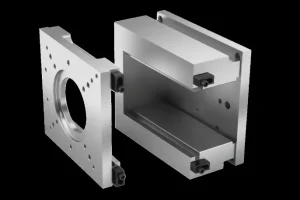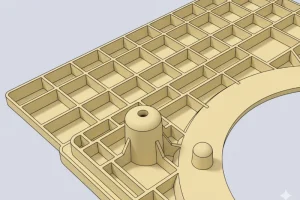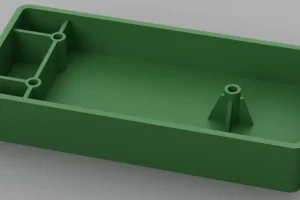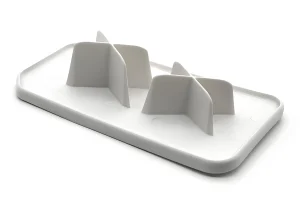Introduction
Injection Molding is a lean manufacturing principles to make parts and components from thermoplastic and thermoset materials. It’s great for making lots of high-precision parts. Like any manufacturing process, you can change a bunch of things to make it work better and cost less.

This article will give you an overview of injection molding, talk about what affects how well it works, tell you what to think about when you want to make it work better, give you some tips for making it work better, and tell you how to make it work betternjection mold.

What is Injection Molding?
Injection molding is a manufacturing process where you take plastic or metal and you inject it into a mold under high pressure and temperature to make a specific shape. The mold has a cavity in the shape of the part or component you want to make.

You inject the molten material into the mold under pressure and then you cool it down until it solidifies. The result is a part that is precise and you can make it over and over again. Injection molding is a fast and efficient process and it’s great for making a lot of parts.

Injection molding is a complex process, and one of the keys to getting the most out of it is to optimize the various adjustable parameters. By optimizing these parameters, manufacturers can reduce cycle times, improve product quality, and reduce costs.

Factors Affecting Injection Molding Efficiency
There are a lot of things that can mess up your low-volume plastic injection molding efficiency. Machine and mold design, material selection, operator skills and training, and maintenance and calibration are just a few of them.
Machine and Mold Design
The design of machines and molds can have a big impact on how well things go. If you have a machine or mold that’s not designed well, it can make your cycle times longer, make you waste more material, and make your parts not as good. That’s going to make your injection molding less efficient.

Material Selection
Picking the right material is really important. If you pick the wrong material, you’re going to have parts that don’t look good, you’re going to waste more material, and it’s going to take you longer to get your parts. That’s going to make your injection molding less efficient.

Operator Skills and Training
The skills and training of the operator can also affect how well the process runs. If the operator is not experienced or not trained well, the cycle time will be longer, there will be more scrap, and the parts will not be as good. This makes the process less efficient.

Maintenance and Calibration
It is important to keep the machines and molds in good shape and to calibrate them regularly. If you don’t do this, the machines will break down, it will take longer to get parts, and the parts will not be as good. This makes the process less efficient.

There are a lot of things to think about when you want to make your injection molding process more efficient. You have to think about how hot the mold is, how fast you shoot the plastic in, how long you let it cool down, what kind of plastic you use, how fast the screw turns and how hard you push on it, how well the machine is set up, how you watch and control the process, and how you take care of the mold.
Parameters to Consider for Improving Injection Molding Efficiency
Temperature Control
Plastic or Melt Temperature: It’s important to control the plastic temperature accurately to melt the plastic evenly. Different materials have specific temperature requirements, and keeping the temperature within the right range prevents problems like not melting all the way or burning the plastic. This makes your injection molding more efficient.

Mold Temperature
Controlling mold temperature affects the crystallinity, shrinkage, and cycle time of the part. Keeping the mold at the recommended temperature helps ensure that the resin has the correct mechanical properties. So, you can optimize injection molding efficiency.

Injection Speed
The speed at which you shoot the plastic into the mold affects how the part fills, how dense it is, and how good it looks. It also affects how the part fills up. You can adjust the speed to help stop problems like flow lines or bubbles. That’s how you make your injection molding better.

Cooling Time
Cooling time is the time the part stays in the mold after the material is injected and filled. Proper cooling time is critical to prevent deformation and ensure uniform solidification of the part. It also affects the overall cycle time of the injection molding process.

Plastic Material Selection
The type of plastic you use makes a big difference in the injection molding process. Different plastics have different melting points, shrinkage rates, and flow characteristics. Picking the right plastic for your application is key to getting the properties you want in your parts. And that’s how you make injection molding efficient.

Screw Speed and Back Pressure
Screw Speed: The rotational speed of the screw in the injection molding machine affects the overall shear of the material. The screw speed should be selected based on the material type and additive content. The right screw speed will make sure the right amount of shear provided by the rotation of the screw and the screw geometry.

Back Pressure: Maintaining proper back pressure on the screw ensures proper mixing and homogenization of the molten plastic. It also helps prevent virtualization and improves part quality. Thus optimizing injection molding efficiency.

Injection Molding Machine Calibration
You gotta calibrate your injection molding machine on the regular if you want it to be accurate. That means you gotta calibrate the pressure, temperature, and timing settings on the machine.

Mold Design and Maintenance
Good molds, with good vents, runners, and cooling, make a big difference in how well the process runs.
Tips to Improve Injection Molding Efficiency
To make injection molding more efficient, you can do a few things. You can control the process better, pick the right materials and handle them right, inspect and test for quality, and keep getting better and fixing problems.

Consistent Process Control
To make sure every part you make is good, you have to control your process. You have to watch your temperature, your pressure, your cycle time, and adjust them. That’s how you make your injection molding process better.

Proper Material Selection and Handling
Choosing the right material and handling it properly is key to making sure your final product performs the way you want it to. That means picking the right material for the job and making sure it’s ready to go before you start injecting it. That’s how you make your injection molding process more efficient.and Selecting the proper insulation.

Quality Inspection and Testing
Quality inspection and testing can help identify defects and ensure that each part meets the required quality standards. This includes using visual inspection, dimensional inspection, and functional testing to verify the quality of each part. Thus improving injection molding efficiency.

Continuous Improvement and Problem Solving
Keep improving and solving problems. This will help you find ways to get better and stop bad things from happening again. Use tools like root cause analysis and corrective actions to fix quality problems and make things better. This will help you make your injection molding better.

Optimize Process Parameters
Set the injection speed, holding time, melting temperature and other process parameters of the injection molding machine reasonably to greatly improve the speed and efficiency of injection molding. Through mold trial and process optimization, determine the best process parameters to avoid waste and increase production capacity. Thereby improving injection molding efficiency.
Automation and Intelligence
By introducing injection molding facility and intelligent technologies like automatic feeding systems and robot operations, you can increase the level of automation on your production process, reduce the time and errors associated with manual operations, and improve production efficiency and energy efficiency.

By using quick mold change technology, you can reduce the time it takes to change molds and increase the amount of time your production line is available. By organizing your mold storage and spare molds in a logical way, you can reduce the time it takes to change molds and ensure the quality and reliability of your molds. This will improve your injection molding efficiency.
Regular Maintenance and Care
Keep your injection molding machine in good condition and reduce failures and downtime by regularly maintaining and caring for it. Clean the injection cylinder, screw, and mold of your injection molding machine to make sure the injection process goes smoothly.

Do a good job in production scheduling, reasonably arrange the injection molding production plan and production scheduling, and avoid overproduction or production interruption. According to the priority and delivery time of the order, the workflow of the production line can be flexibly adjusted to improve production efficiency and on-time delivery rate.
Training and Skill Improvement
Provide training and skill improvement opportunities for employees to make sure that operators are good at operating skills and process knowledge of injection molding machine. Reasonable division of labor and equipping of suitable technicians to provide timely technical support and troubleshooting.

Quality Control and Process Optimization
Set up a sound quality control system to optimize the process and keep making it better. By finding and watching the important things in the injection molding process, you can fix them right away and make sure the products are always good. That way, you won’t have to throw away as many bad ones or fix them up. That’s how you make injection molding better.

Steps to Improve Injection Molding Efficiency Parameters
Improving injection molding efficiency parameters is a process that requires careful planning and analysis. Here are the steps to improve injection molding efficiency parameters.
Collect Data
The first step to improve injection molding efficiency parameters is to collect data. This includes collecting data about the materials you use, the size and shape of the parts you make, and the current injection molding parameters you use. You can then analyze this data to figure out where you can make improvements.

Analyze Data
Once you’ve got the data, you need to analyze it to find out where you can make improvements. Look for trends in the data. For example, you might find that the temperature, pressure, cycle time, or speed isn’t right in certain areas. This analysis will help you figure out where you can make improvements.
Adjusting Parameters
Once you know what needs to be fixed, it’s time to adjust the injection molding parameters. You can do this by adjusting temperature, pressure, cycle time, or speed. Make small adjustments and watch the results to make sure you’re getting the effect you want.

Practices to Improve Injection Molding Efficiency
To get the most out of injection molding, there are a few things you can do. First, make sure your machine is set up right and running smoothly. Second, design your mold and tooling to be as efficient as possible. Third, handle and prepare your materials properly. And finally, keep an eye on your process and make adjustments as needed.and reduce energy usage.

Proper Machine Setup and Operation
Setting up and running your machine right can make a big difference in how well it works. That means setting the right numbers for things like temperature, pressure, and how long each cycle takes. It also means making sure your machine is working the best it can.
Efficient Mold Design and Tooling
Good mold design and tooling can help you make parts faster, with less waste, and better quality. That means designing the mold right for the part and using good mold materials.

Material Handling and Preparation
Using the right stuff and getting it ready right can help you waste less and make more. That means using the right stuff-handling gear, like dryers and feeders, and getting your stuff ready right before you shoot it.

Process Monitoring and Optimization
Keep an eye on your process and make it better. Use sensors and monitoring systems to watch important things and make changes to make your process better.

Conclusion
Injection molding parameters are super important to get the most out of your process and energy costs. By looking at temperature, pressure, cycle time, and speed, you can get the most out of your injection molding parameters and make good parts for cheap.
When you’re optimizing injection molding parameters, you need to think about things like material optimization, quality control, and part cost. and Perform injection molding operation.

If you plan it out and do the math, you can save money and make more parts by optimizing your injection molding parameters.Zetar Mold is a efficient injection molding company and you can contact Zetar Mold at any time if you have any needs.










